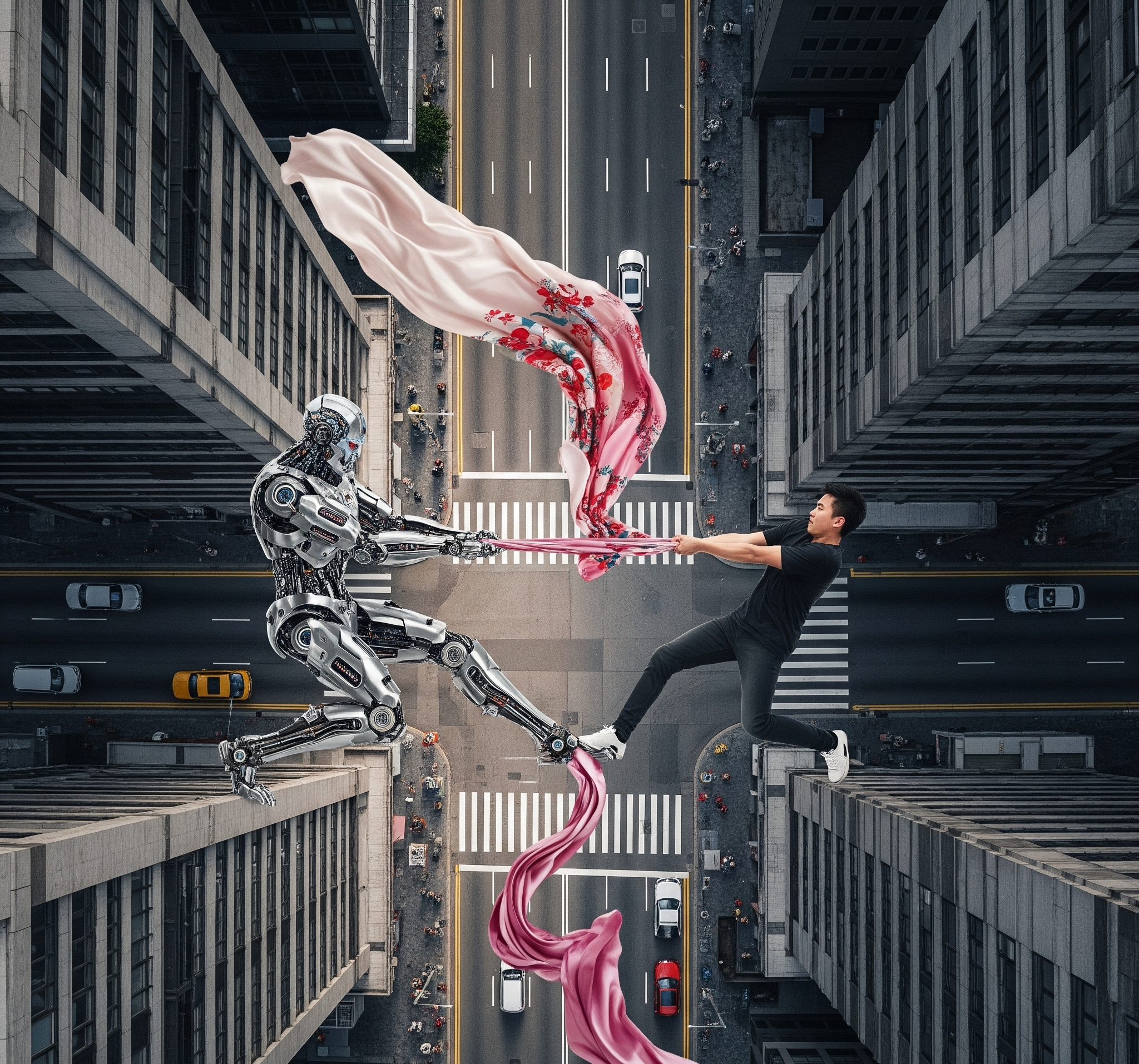WHO MOVES FORWARD, AND WHO GETS LEFT BEHIND?
The use of AI in the beauty industry is changing who gets to create, who gets heard, and who gets left behind. From AI-powered design tools to machine-learning-driven marketing engines, we're witnessing not just a tech revolution, but a cultural shift. And yet, for all the noise about innovation, we rarely ask the right questions: Who is benefiting? Who is invisible? And what are we willing to trade for convenience, scale, or speed?
This article is about ethics and technology, but not in the usual abstract sense. It's about decisions happening now in startups, in governments, in your own feed that shape power, labor, truth, and representation. It’s about the friction between creative autonomy and algorithmic control. It’s about how AI tools in the fashion industry and the use of AI in the beauty industry reveal deep contradictions in our values.
CREATIVE FREEDOM OR ALGORITHMIC SHORTCUT?
AI-generated visuals are efficient, yes. But they also come preloaded with someone else’s assumptions about beauty, gender, race, and desirability. The so-called democratization of design often just reinforces dominant aesthetics, only faster and cheaper.
AI tools in fashion let brands generate virtual product shoots, test hundreds of ad variations, or simulate trends before they happen. It’s not neutral. It changes what gets made, who gets hired, and whose body is considered the template.
In the beauty industry, AI personalizes recommendations and automates content at scale. But how do you build trust when the face on the screen isn’t real? When influencers are generated and consumers are targeted by models that adapt in real time to emotional reactions?
Efficiency comes at a cost. And not everyone is invited to the table.
WHO OWNS THE OUTPUT?
When a photographer spends hours lighting a shot and an AI renders something comparable in minutes, it’s not just a workflow shift. It’s a restructuring of creative labor. Ownership, authorship, and value get muddled. AI doesn’t erase human creativity. But it does challenge how we define skill and how we pay for it.
Just because the tools are accessible doesn’t mean the playing field is level. A teenager with no connections can now produce a polished film. That’s exciting. But when the same tools let corporations replace entire departments with automation, the stakes shift.
This isn’t liberation. It’s leverage. And the people who understand the tools will have it.
LEARNING FROM PAST TECH REVOLUTIONS
Every technological leap has its winners. During the industrial revolution, those who adapted who learned to use the machines moved forward. Those who didn’t were displaced. That pattern hasn’t changed. The difference now is speed.
In a decade, 30% of jobs could be automated. Creative industries are already feeling it. Editing, photography, copywriting. If your value is based on repetition or polish, AI is already encroaching.
But AI doesn’t think. It predicts. It’s not creative, it remixes what it’s been fed. That’s the limit. And the opportunity.
ETHICS IN TECHNOLOGY IS NOT A NICHE DEBATE
This isn’t just about jobs. It’s about systems. The ethics in technology affect democracy, mental health, climate, consent, and identity. Deepfakes erode trust. Algorithmic feeds push teens into anxiety spirals. Surveillance tools are exported to regimes with no regard for civil rights.
In the background, massive data centers burn through energy to keep everything “smart.” E-waste piles up. Only 5% of devices are repairable. AI models trained on stolen art or biased datasets quietly shape the internet’s visual language.
This is not a glitch. It’s a design decision.
WHAT NEEDS TO CHANGE?
If we want innovation that actually improves life, not just output, the ethics need to be built in at the level of interface, training data, labor conditions, energy use.
That means:
- Enforced transparency in how AI is trained and deployed
- Laws requiring consent before likenesses are used
- Public education that teaches media literacy, not just coding
- Design that prioritizes mental well-being and accessibility
- Standards for AI use in fashion and the beauty industry that center sustainability, representation, and labor fairness
- It’s not about being anti-tech. It’s about being pro-accountability.
WILL AI TAKE OVER?
No. But the people who understand AI will!
That’s the real divide. Not between humans and machines but between those who adapt, shape the tools, and those who get automated out.
If you care about representation, labor, truth, or beauty you need to care about AI. Learn the tools. Ask better questions. Push for transparency. Because the future of ethics and technology will not be decided by the loudest companies. It will be decided by the people who show up and know what they’re doing.





